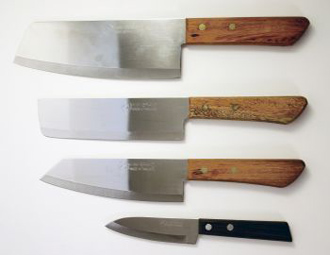 I come from a family of artists. I don't mean an "artsy" family— I mean, my dad, my mom, and both siblings were artists. Very talented artists. For years, I filled sketchbooks with ill-executed doodles. I drew musclebound action heroes with giant guns, and 80's-futuristic sports cars drawn in 3/4 view, which my lack of knowledge of perspective turned into formless, shiny blobs.
I come from a family of artists. I don't mean an "artsy" family— I mean, my dad, my mom, and both siblings were artists. Very talented artists. For years, I filled sketchbooks with ill-executed doodles. I drew musclebound action heroes with giant guns, and 80's-futuristic sports cars drawn in 3/4 view, which my lack of knowledge of perspective turned into formless, shiny blobs.

All my life, until I turned 14, I thought I'd been handed the inopportune end of the family talent stick. At 14, I picked up my first musical instrument— a Hohner PJ bass guitar. I'd found my first calling, and I've been at it ever since. Look at the smile on this kid:

The fact that I found something creative to be good at didn't totally quell the sting I felt from my profound lack of visual art skills. I remain resolute in my commitment to eventually developing the latent visual arts genius that is my birthright. OK, not really, but DO often wonder how my life would be different if I'd started spitting out visceral, kaleidoscopic canvases, instead of albums.
When I was 18, and had already been a musician for a few solid years, I was following my dad around the local art supply store as he picked up supplies. A set of brightly-colored watercolor crayons caught my eye, and penniless though that I was, I managed to get a set, along with a watercolor sketchbook with a black, crinkly cover. I got these new tools home, sat down with a little dish of water, and started mucking around.

I laid down some dark lines of crayon and began pushing the color around the page with wet fingers. I really took to the feeling. I was left with some sort of psychedelic octopus-like blob. I loved the little traces of color I could see, where faint amounts of paint had lingered on my fingers as I moved them across the thick, toothy paper. I wanted to accentuate them.
I took an india ink pen and began to draw outlines around the colorful forms. The generous, even lines seemed to make something more tangible out of these semi-random smooshings. I was very much in love with this process. I repeated it regularly over the course of a week, filling up the sketchbook. Then, all of a sudden my super-compressed teen attention span tripped closed, I put the crayons and the nice black watercolor book in the closet and forgot about them. I lost them in the bustle when I moved away from home, and I remember feeling a little pang of missed opportunity.
Since then, every 5-7 years, I find myself walking through an art supply store, and I buy another set of Caran D'Ache crayons and another watercolor book. I knock out a few ephemeral abstracts, and then my super-compressed adult attention span slams shut, I shelve the tools, and I tend to move soon after, and again lose the tools in the hustle and bustle of a quick city move.
Recently, I felt drawn to doing this again. My first sketch looked like this:

Now, I hold no pretense that this is good art, or even art at all, but there is something about the process of taking these tools and doing this thing seems to scratch some sort of periodic itch for me. I tend to think that what this action satisfies is a need to explore my mind from alternative angles in times of stress and transition. When I'm facing flux and not feeling so tough, what I want is proof that there's more to me than what I perceive— that I have an ally in myself that exists below the surface of the person that I walk around as every day.
When I buy this little art kit and I smoosh the colors around, I'm doing something wholly disconnected from my normal processes, and something with a reverently uncomfortable history for me. There is no screen, there are no notes, and no words, only tenuously held alien tools, and instinctual movements. I feel a tie form, fleetingly, between all the mileposts of my life as I do this, nonverbally and without thought. I smoosh and outline, smoosh and outline, and I'm always surprised with the outcome, like a bowl of tea leaves I can almost read.
 As I got more serious about cooking, I splurged and bought myself a very nice Kai Shun santoku - like the Tosagata Hocho,
As I got more serious about cooking, I splurged and bought myself a very nice Kai Shun santoku - like the Tosagata Hocho, 



